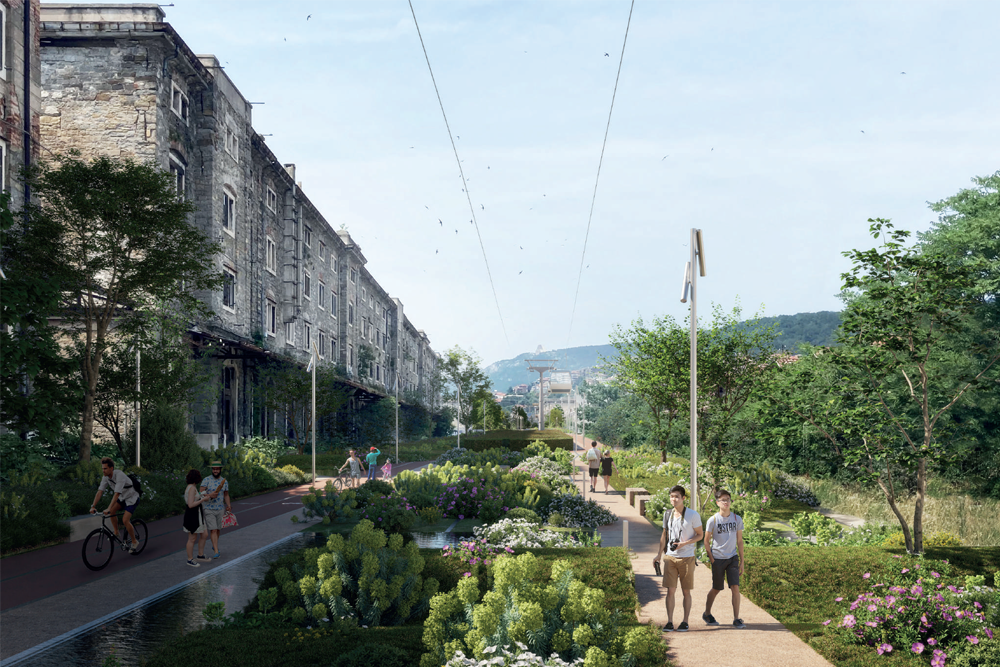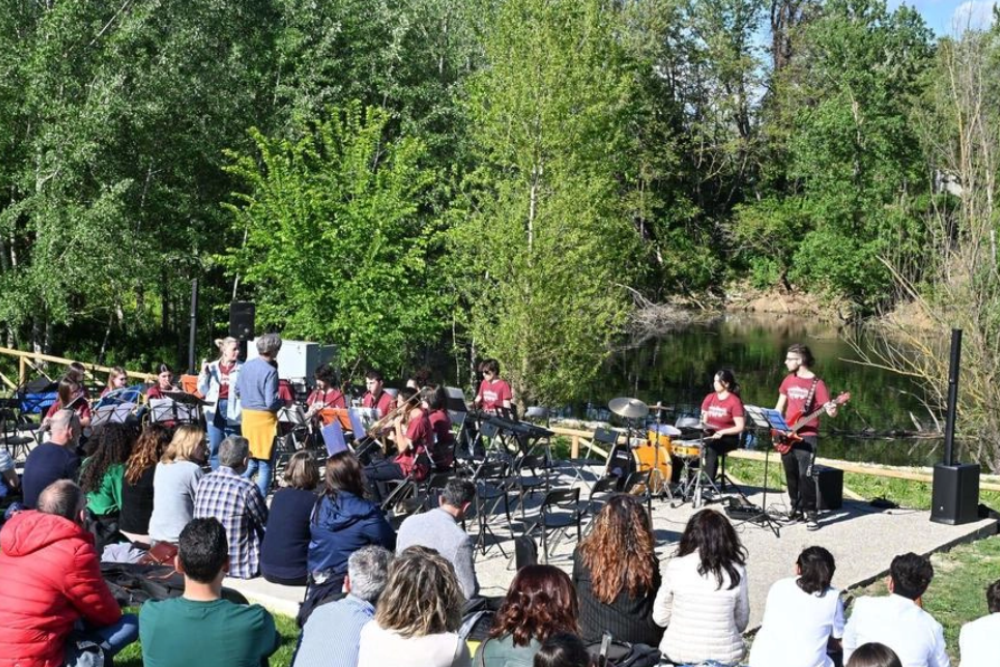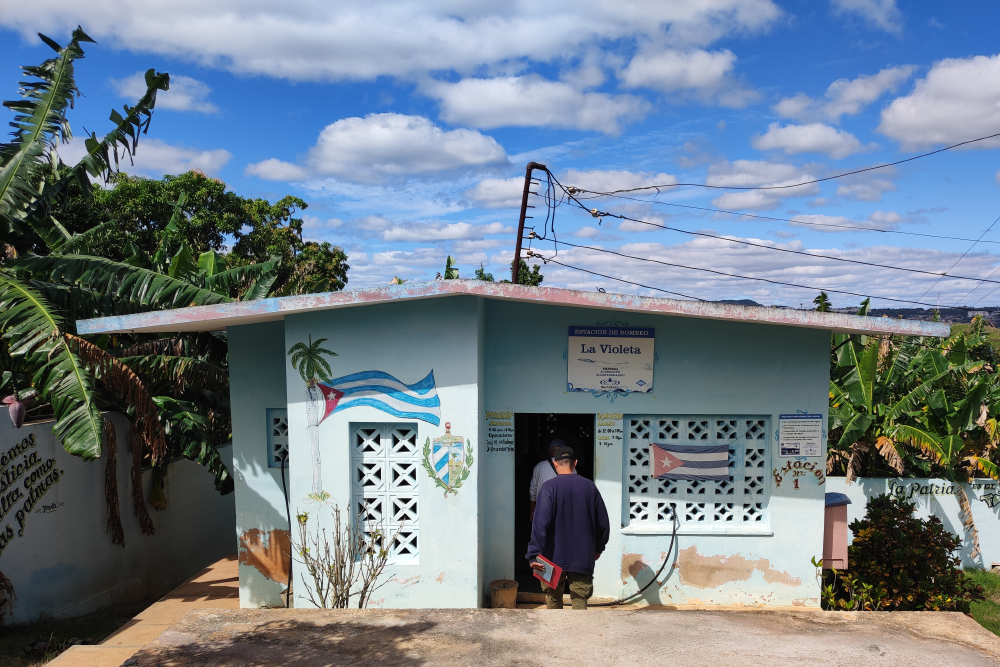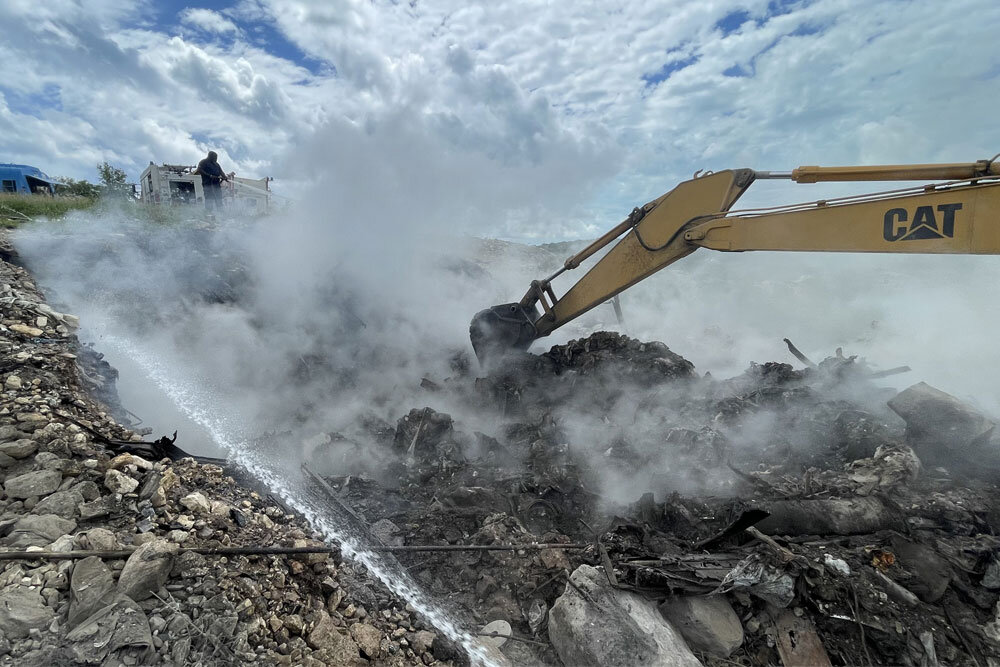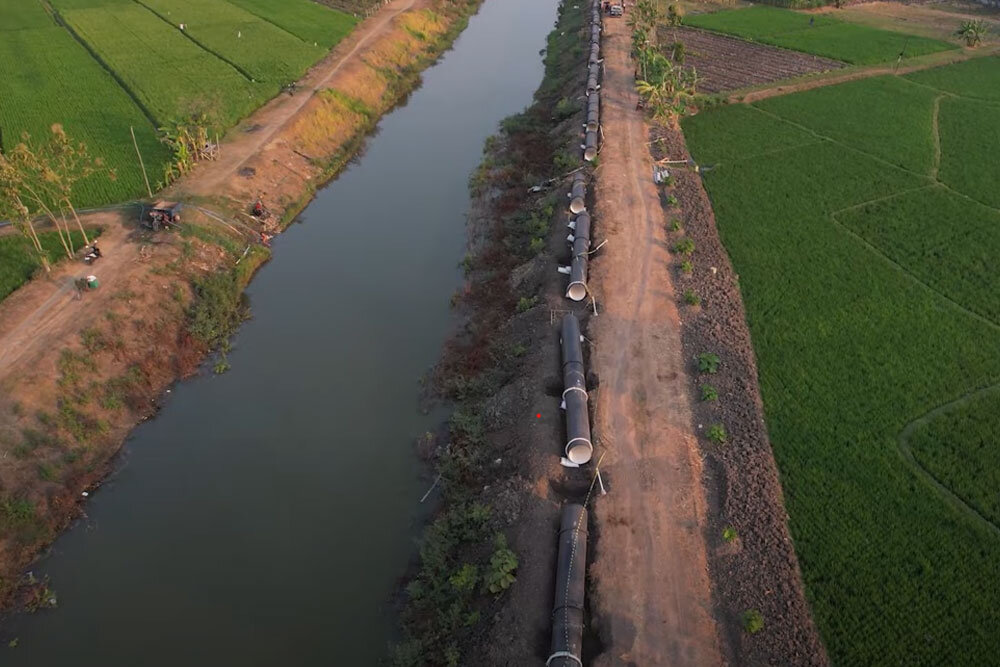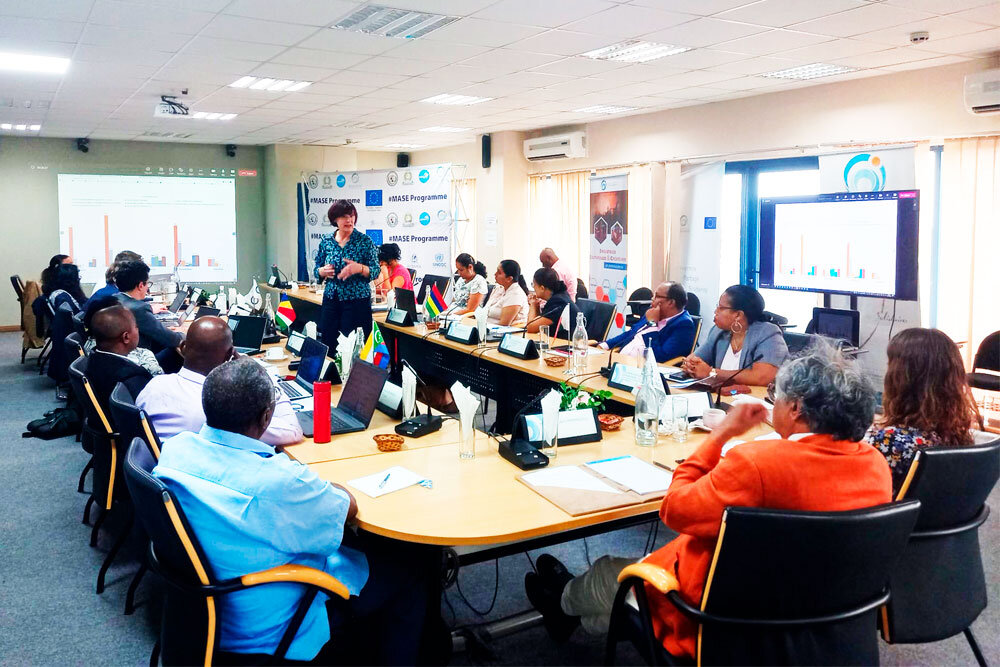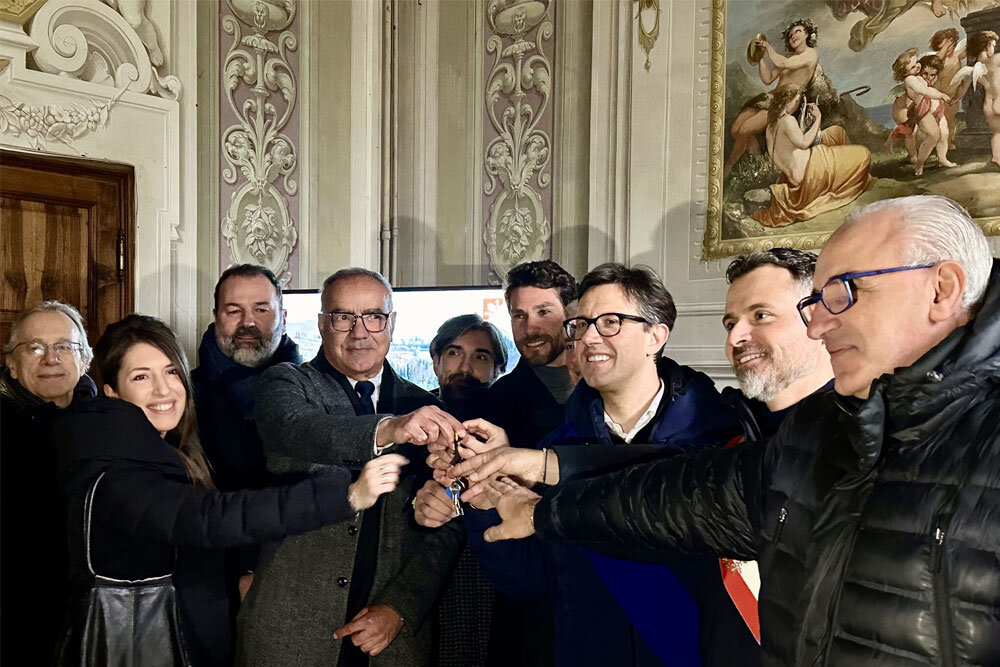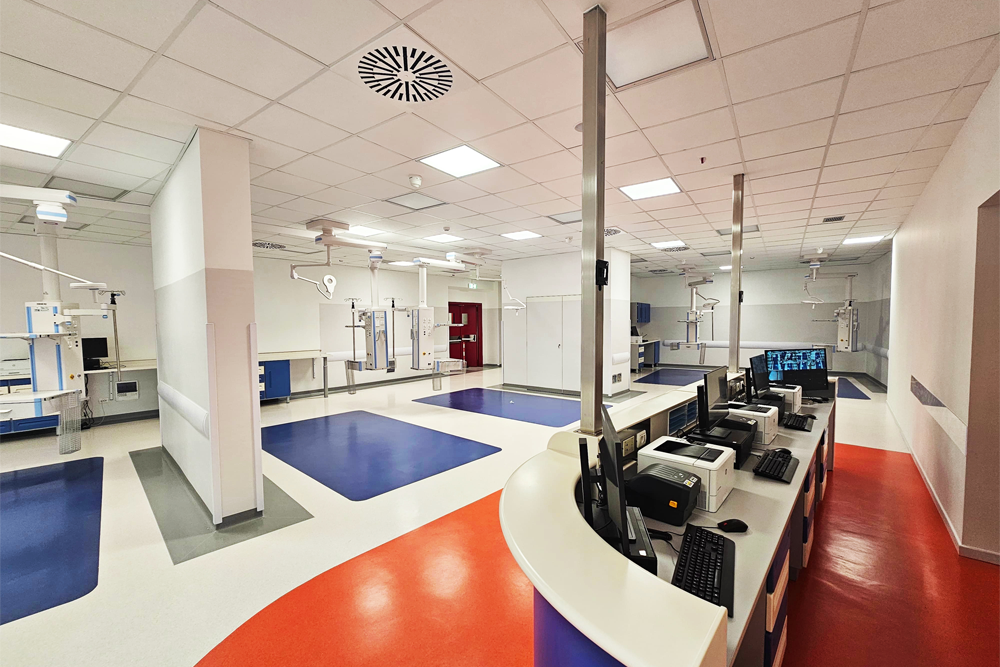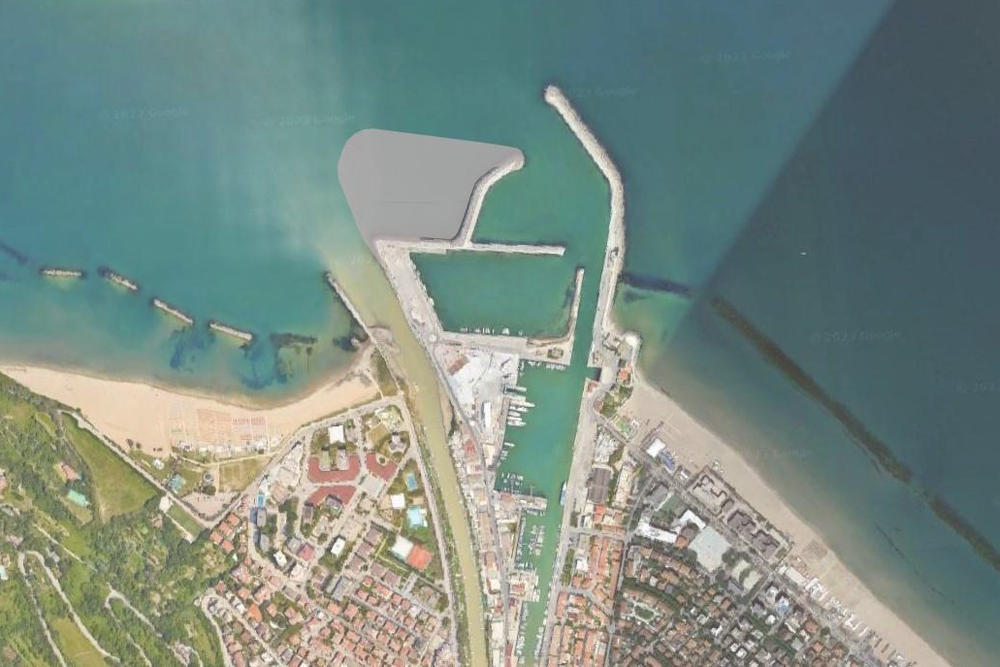The Porto Vecchio of Trieste marks the city’s new Renaissance – Linear green park of industrial archaeology from the Barcola embankment to the city centre.
The old harbour of Trieste, Porto Vecchio, extends over approximately 66 hectares on the city’s seafront, from the Ponte Rosso Canal in the heart of the city to the bathing area of Barcola. These large buildings where used as port facilities, warehouses, hangars and special buildings during the Austro-Hungarian domination.
With the advent of new ways to transport goods, the area and the 19th-century warehouses fell into disuse, unable to cope with the new requirements imposed by commercial traffic.
Thus, The Municipality of Trieste has launched the Porto Vivo initiative, one of the most important urban renewal and regeneration projects in the Mediterranean basin. Among the other projects it comprises the transformation of the huge abandoned Porto Vecchio area into a urban forest between the Karst and the city.
Within the framework of the PNRR, mission 1, component “Tourism and Culture”, in an integrated contract with the companies CNS Consorzio Nazionale Servizi, Infratech and Edilerica, Hydea was awarded the final design of this intervention, starting from the technical-economic feasibility designed by Arch. Alfonso Femia.
More precisely, The project “Porto Vecchio of Trieste, the new Renaissance of the city – Linear green park of industrial archaeology from the Terrapieno di Barcola to the Historical Centre” envisages:
- the creation of a sequence of green spaces supported by the longitudinal structure of the paths departing from the design of the existing tracks;
- the creation of 6 thematic landscape areas marked by confrontation and coexistence, contained by two stretches of water at the heads and by some enlargements of the axis that are at the same time deepening, connecting and referential.
As a matter of fact, the new Urban Park has the function of creating a natural landscape capable of lending unity do the different environments characterising Porto Vecchio, in order to become a local and extra-territorial pole of attraction for sports and recreational activities that reconnect man and nature.

